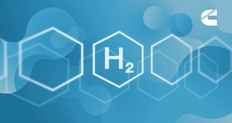- IPCEI Hy2Tech includes 41 projects from 35 companies in 15 European countries.
- The Member States will provide up to €5.4 billion in public funding, unlocking an additional €8.8 billion in private investments.
- Cummins is building two new electrolyzer factories in Spain and China, each starting at 500MW and scalable to 1GW.
- Cummins powered the world’s largest PEM electrolyzer at 20MW in Bécancour, Canada.

Expansion of Electrolyzer Manufacturing
Cummins Inc. will expand its PEM electrolyzer manufacturing capacity at its Oevel, Belgium, factory to 1 gigawatt (GW) with support from the Important Project of Common European Interest (IPCEI) Hy2Tech program. This initiative, recently approved by the European Commission and funded by the Flanders Innovation & Entrepreneurship Agency (VLAIO), aims to develop a new generation of PEM electrolyzer cell stacks for large-scale hydrogen production systems.
Global Manufacturing Footprint
The expansion in Belgium is part of Cummins' broader strategy to scale its global electrolyzer manufacturing footprint. The company has already increased capacity at its Mississauga, Canada, facility and is constructing two new electrolyzer factories in Spain and China. Each of these new factories will start with a manufacturing capacity of 500MW, scalable to 1GW.
IPCEI Hy2Tech Program
IPCEI Hy2Tech includes 41 projects from 35 companies across 15 European countries. The Member States will provide up to €5.4 billion in public funding, which is expected to unlock an additional €8.8 billion in private investments. This program aims to promote hydrogen development and deployment, boosting jobs and growth throughout Europe while contributing to the green and resilience agenda.
Technological Milestones
Cummins has a history of innovation in hydrogen technology, including powering the world’s largest PEM electrolyzer at 20MW in Bécancour, Canada, and the world’s first megawatt-scale demonstration plant for storing wind energy in the natural gas grid in Windgas Falkenhagen, Germany. Other milestones include the world’s first hydrogen-powered passenger train in Europe and the first hydrogen refueling station for ships, cars, trucks, and industrial customers in Antwerp, Belgium.
